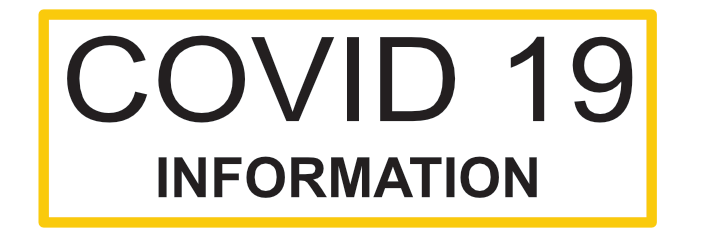
TAUPO SALEYARDS
Following the government announcement regarding the implementation of the COVID-19 Protection Framework (“CPF”), which is the new 3-level traffic light system
All saleyards will operate at all levels when using the Vaccine Pass.
These government-mandated changes come into effect from, Friday, 3 December 2021
To keep you, our staff, and rural communities safe.
Only those who are fully vaccinated against COVID-19 and have shown their Vaccine Pass will be permitted to enter all saleyards.
Green: Livestock auctions and On-Farm sales can operate with no limits on the number of people who can attend. QR-code scanning/record-keeping is encouraged.
Orange: Livestock auctions and On-Farm sales can operate with no limits on the number of people. Face coverings and QR-code scanning/record-keeping are encouraged.
Red: Livestock auctions and On-Farm sales can operate with capacity limits of up to 100 people, based on 1-metre physical distancing. Face coverings and QR-code scanning/record-keeping are encouraged.
To determine which CPF framework you are in, please refer to the government’s traffic lightmap on the COVID-19 website.
Children under the age of 12 do not need to provide a Vaccine Pass to enter the saleyards, but they do count towards any capacity limits which may be in place.
Food Canteen
Unfortunately currently under a Red or Orange Level
The Canteen will not be operating
There will be Tea & Coffee available
General Saftey Guidlines
Physical distancing
What is physical distancing?
Physical distancing (sometimes known as ‘Social distancing’) is about keeping a safe distance from others.
This is about physical distance. For your own mental health you can, and should, keep in touch with friends and family via the phone, or online.
Outside of your home, or if you are sick, keep a 2 metre distance from people at all times.
Physical distancing is an important way to unite against COVID-19.
How to physically distance
It’s best not to shake hands, kiss hello or hongi for now.
Where you can, keep a bit of space.
Hongi and harirū
We are all being asked to play our part to refrain from physical contact to prevent the spread of COVID-19.
COVID-19 can spread from person to person through physical contact. As well as the impact on New Zealanders generally, this will have an effect on particular areas of tikanga Māori (including kawa), as we move to protect our whānau, hapū and iwi (particularly those who are more vulnerable such as our kaumātua – our koroua and kuia).
In practice, this means suspending our customs of hongi and harirū, alongside stopping kissing, hugging and other forms of close physical contact.
Alternatives include, waving, smiling or other non-physical contact greetings.
How to wash your hands properly
- Step 1: Wet hands with running water
- Step 2: Apply enough soap to cover wet hands
- Step 3: Scrub all surfaces of the hands – including back of hands, between fingers and under nails – for at least 20 seconds
- Step 4: Rinse thoroughly with running water
- Step 5: Dry hands with a clean cloth, single-use towel or blow drier.
How to use hand sanitiser
The same goes for hand sanitiser: use a sanitiser that contains at least 60% alcohol. Rub it into your hands for at least 20 seconds to ensure full coverage.
When should I wash my hands?
Wash your hands regularly, especially at the following times:
- After blowing your nose, coughing or sneezing
- After visiting a public space, including public transport, markets and places of worship
- After touching surfaces outside of the home
- After touching money
- Before, during and after caring for a sick or vulnerable person
- Before and after eating.
Always wash your hands at the following times:
- After using the toilet
- Before and after eating
- After handling rubbish
- After touching animals and pets
- After changing babies’ nappies or helping children use the toilet
- When your hands are visibly dirty.
Do I need to use warm water to wash my hands?
No, you can use any temperature of water to wash your hands. Cold water and warm water both kill germs and viruses – as long as you use soap.
Which is better: washing your hands or using hand sanitiser?
Handwashing with soap and water or using hand sanitiser, when done correctly, are both highly effective at killing most germs and viruses. Hand sanitiser is often more convenient when you are outside of the home, but can be expensive or difficult to find in emergency contexts.
Cough or sneeze into your elbow
It keeps the virus off your hands, so you won’t spread it to other people and make them sick too.
Why do it?
Coughing or sneezing into your elbow catches the droplets and stops them getting onto your hands.
Tissues
Put any used tissues in the bin or a bag immediately. Then wash your hands thoroughly. Then dry.
How it spreads
Like the flu, COVID-19 can be transmitted from person to person. The scientific evidence confirms that COVID-19 is spread by droplets. When an infected person coughs, sneezes or talks, they may generate droplets containing the virus. These droplets are too large to stay in the air for long, so they quickly settle on surrounding surfaces. If other people touch these surfaces they may get sick.
Facemasks
For most people facemasks are not recommended. Facemasks play an important role in clinical settings, such as hospitals. For people with symptoms of an acute respiratory infection, there may be benefit in wearing a face mask to reduce the spread of infection to other people.
